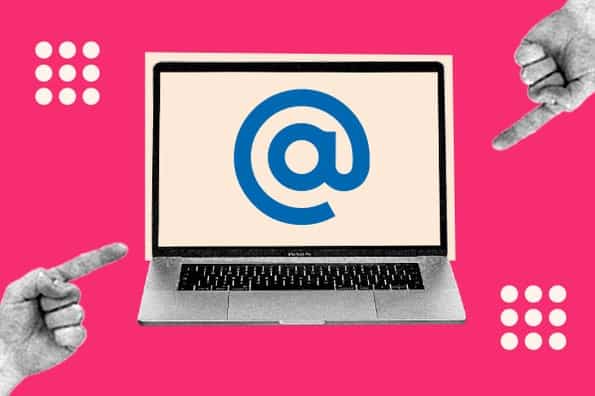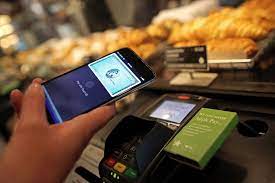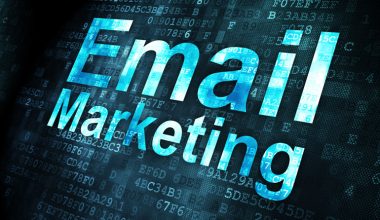Service emails play an important role in email marketing that many people are unaware of. while they are slightly different from customer service emails, as we’ll see in this article, it is important to understand what a service email is and how it works. Here, we’ll give you a general overview of service email with appropriate examples, as well as top email service providers and simple customer service email etiquette.
What Is A Service Email?
Service emails are messages that include notifications, alerts, receipts, and confirmations. Service emails typically include information about items or services to which the recipient has committed.
The email in this case is not marketing-related. And, unlike email marketing, where permission is required to send an email, permission is not required for service emails. As a result, if service emails are not considered marketing emails, they might be sent without authorization.
Why Do You Need Service Emails?
Service emails are used for a variety of purposes. The primary reason is the immediate delivery of information to clients. This has a significant impact on the whole consumer experience. And there would be no customers to service if there was no exceptional customer service.
Another reason service emails are employed is that they are eco-friendly. Rather to sending printed materials, such as receipts or information updates, they are instead sent online.
Service emails can be used for a variety of purposes and should not be restricted. Items such as a statement of accounts are frequently sent out. A frequent customer or client would gain much as a result. They would receive an overview of their account while you continued to establish relationships and service them. Overall, staying on top of things.
Service Emails With Notifications
The upgrading of terms and conditions is a perfect example of employing service emails. Customers/subscribers must be notified whenever your terms and conditions are updated. And what better method to accomplish this than via email? No need to ship out multiple pages of printed content that will be discarded.
If your company’s business address or contact information has changed, a service email is issued to alert the customer(s).
A consumer can also call or chat to amend or change an order or account information. They would then receive confirmation of the modification nearly instantaneously. Any pertinent updated materials are also distributed by email.
For whatever reason, a client decides to reset their password, therefore multiple service emails are issued to reset and confirm a new password.
Another type of notice is when a consumer logs in from an unfamiliar or new location. An email is sent to the consumer asking them to confirm their login.
Service Emails with Order Confirmation
Order confirmations are most commonly used in the eCommerce industry. An online order is received by a web store. Following the order, an email confirmation is sent with all important purchase information, such as the date of purchase, delivery address, product, tax receipt, and so on.
A pre-order may be included in an online order. The order has been placed, but the product(s) may not be in stock or available at this time. In this case, pre-order confirmation will be sent. Furthermore, additional service emails will be sent once the order is in stock and ready for shipment.
When the order has been dispatched, another service email can be issued. The delivery is then confirmed by email, with the customer approving receipt of the goods. Alternatively, proof of signature.
A follow-up email might be issued at a later date to solicit input.
Service Emails for Customer Feedback
Service emails are also frequently used to solicit consumer feedback. Do you want to know how you’re doing or what your customers think of your product or service? All you have to do now is ask.
A survey can be used to gather feedback. This can also assist you to make future marketing and business-related decisions. Perhaps your company’s name isn’t as well-known as others. Or perhaps your company is weak in a specific area of expertise. A survey’s results can help guide and define your future marketing goals and strategies.
What Is Customer Service Email?
Email responses to a client’s question, feedback, or complaint are known as customer service emails. Customers can contact your company using a contact form on your website, an email address given on your website, or by contacting customer service. Your business may send out automated customer service emails or compose personalized emails to customers. Typically, customer service emails address a customer’s problem with a product or service. Here are some alternative uses for customer service emails:
- Problem-solving
- Responding to criticism
- Providing assistance
- Providing installation services
- Troubleshooting technological difficulties
- Making inquiries
- Inquiring with them for feedback
Customer Service Email Examples
Here are some examples of customer support emails to help you construct your own responses:
#1. Answering a question
Here’s an example of an email response to a client query:
Hello, John.
Thank you for contacting us about delivery estimates for your personalized order.
It takes three to four weeks for customized things to reach at their destination. I looked into your order # HW-659 and saw that it is nearing completion. It should arrive in seven to ten business days.
If you have any questions, please let me know.
Sincerely,
Mary
Customer Service Representative
#2. Answering several questions
Here’s an example of a consumer that has several questions:
Shirley, good afternoon.
Thank you for contacting us regarding your customized order # HW-659. Your queries are answered here.
“Is there any way to reorder the same items without going through the customization process again?”
Yes, you can rearrange orders by doing the following steps:
- Sign in to your account.
- Then select “Account History.”
- Select “Purchases.”
If you want to reorder, go to the purchase and select “Buy Again.”
“How do I apply multiple discount codes?”
We currently do not accept multiple discount codes in a single transaction. Could I propose purchasing your things separately and using your other discount codes that way?
Please contact me if you have any questions.
Best,
Sam
Customer Service Representative
#3. Answering a consumer complaint
If a customer has a complaint, you could respond as follows:
Good day, Diane.
Thank you for your recent comments. I regret that we were unable to achieve your quality expectations with order # HW-659 and that your item arrived damaged.
I refunded the full amount for the item in your account. You should have the money in your account within 48 hours. We sent you a replacement item via expedited shipping. ABC456123 is the tracking number for that package.
Please contact me if you have any questions or comments.
Thank you very much.
Paul
Customer Service Representative
Customer Service Email Etiquette
With all of those emails being sent and received every day, adhering to normal email etiquette guidelines might increase the likelihood that business partners and consumers will respond to and engage with a message.
Here are a few customer service email etiquette best practices that everyone can use:
#1. Make use of good spelling and grammar.
Spelling and grammar errors make the sender appear less professional, make your message easier to read, and demonstrate respect for the recipient. An email intended to promote a “public” program but omits the “i,” for example, could cause much confusion and humiliation; the error is not unheard of, as confirmed by public-sector employees, and it remains a prevalent problem. Furthermore, common grammatical faults, such as mixing up their, their, and they’re, are presented sloppily. Even the best writers (and editors, for that matter) make typos and grammatical errors from time to time. Use spell check to catch frequent mistakes. Consider taking it a step further and using a more advanced spelling and grammar checker, such as Grammarly.
#2. Create a distinct topic line.
The subject line is the first thing recipients see, and it is the most important aspect in determining whether they open your email at all. Write a subject line that entices people to open it—what is the most important thing they should know about the contents of your email? What do they stand to gain?
An email marketing your company’s largest sale of the year, for example, may highlight how much things are discounted and how long recipients have to participate, such as: 60% off all summer clothes this weekend only. An email presenting your recent content article, on the other hand, can highlight the major problem it solves, such as Your home-improvement problems solved.
It is critical that the subject line reflects the email contents, in addition to being honest and attention-grabbing. Getting someone to read your email isn’t a win if the email fails to deliver on the promise made in the subject line, and you risk losing your receivers’ confidence by deceiving them.
#3. Send emails only to recipients who have opted in.
This is not only excellent email etiquette for marketers; it is also the law. Only send emails to those who have actively joined up for your list to avoid being placed on a blacklist and having your emails captured in spam filters. If someone receives an email from you that they did not request, they are more likely to dismiss it as junk mail rather than as something worth opening and reading. Maintaining email opt-in standards will not only protect you from spam lists but will also boost the success of the emails you do send.
#4. Follow the brand’s font and color specifications.
When creating email templates, consider your company’s style guide first. The typefaces and colors used in professional emails should be consistent with those used on your website and other marketing platforms, and there is typically a standard for even internal communications between business partners and coworkers. If the corporate website is all teal and purple with Arial font, an email that’s orange and black in Comic Sans will appear to be from a whole other brand. Maintaining a consistent visual identity allows consumers and coworkers at the same firm to connect all of their experiences and touchpoints with you, including marketing emails, individual emails, e-commerce, blog, and more.
#5. Keep email size in mind.
Many typical content forms have enormous file sizes, such as infographics, movies, and ebook PDFs. Large attachments may be rejected or marked as spam by an email client. Even if they do reach the inbox, they will be slow to load and may consume inbox bandwidth that your recipient cannot afford.
Instead of email attachments, embed material when possible, but only when it does not increase the size of the email. If your content exceeds 100KB in size, include a link to the file hosted on your website instead.
Although downloadable marketing assets are frequently placed behind a lead-generation gate, it is still critical to keep email size in mind when delivering messages to customers, prospects, or internal business partners. When dealing with clients who require assistance, sales, customer success, or customer support teams may find it useful to send an attachment, and the last thing you want to do is clutter someone’s email with big PDFs or JPEGs when they’re in the midst of a difficult scenario.
#6. Include a strong call to action (CTA).
Every marketing email you send serves a purpose. It’s critical to be clear about the action you want the receiver to do after reading the email. Sometimes it will be a purchase, but more often than not, email marketing will lead to softer activities such as clicking to read a blog article, following your business on social media, or completing a survey. Determine the key action you want the recipient to perform before sending, and utilize it to create a CTA that motivates them to do it.
#7. Use Exclamation points sparingly.
Exclamation marks may appear to be an easy way to add some brightness to an email, but they can give the impression that you’re trying too hard. Consider receiving an email with the subject line: “Welcome to our email list!!!!”
It doesn’t feel very professional to most people. An exclamation point might help you communicate excitement from time to time, such as when you sign off an email in late January with “Happy New Year!” or telling a new customer, “We are excited to work with you!”But only use one at a time, and use them sparingly, making sure they get the proper emphasis when you do use them.”
What exactly is a Business Email Service Provider?
The Business Email Service Provider manages and serves the business email facilities. This service provides premium email service, which differs significantly from free webmail services such as Yahoo and Google. They are appropriate for small and medium-sized businesses.
The domain name of the company is also included in the email address using the Business email service. Instead of the standard @yahoo.com, @hotmail.com, or @gmail.com email addresses, businesses can have the email address personalized based on their desired name to appear more professional.
Other modern technologies distinguish business email services from traditional free webmail providers. The service will host the company’s domain name as well as email security authentication mechanisms including rerouting, replication, and filtering.
What are the Top Business Email Service Providers?
The top ten email service providers include:
- G Suite
- Office 365
- Microsoft Outlook
- Yahoo Small Business
- Rackspace
- Kerio Connect
- Amazon WorkMail
- Intermedia
- IceWarp
- The OX App Suite
How Do You Write A Service Email?
- Be a person.
- Be on time
- When appropriate, apologize
- Get the information you need immediately
- Establish consistency.
- Take nothing personally
- Respond to all of the customer’s inquiries
- When and where possible, share resources.
How Do You Respond To A Service Request Email?
- Make sure you have all of the information you need to respond.
- Avoid overcomplicating things.
- Use the customer’s language.
- Ask inquiries in a professional and courteous manner
- When asking a question, keep the three S’s in mind
- Important information should be formatted
- Always proofread your work.
What Are 3 Examples of Email Services?
For safe, feature-rich business email services, Gmail, Outlook, and ProtonMail are all excellent options.
How Do You Send A Service Proposal Email?
- A quick introduction and any relevant background information.
- Why are you submitting the proposal?
- Establish your aims and goals, as well as theirs.
- Highlight your distinct talents.
- Discuss the budget and how it will be spent briefly.
- Include a call to action and a request for a follow-up.
What Is an Example of a Customer Service Message?
Hello [customer name], and thank you for contacting us. We recognize there could be an issue with your order. We’re investigating it right now and will get back to you as soon as we know what’s going on. Hello [customer name], I just got your ticket.
To summarize,
Service emails generate a great impression in the minds of customers. A customer gets access to all pertinent information regarding their purchase or commitment. Email is the ideal medium for direct and immediate communication. The same may be said with SMS; immediate confirmations and inspirations are delivered directly to your phone.
So, whether you can utilize service emails for marketing ultimately depends on how you use them while conforming to relevant rules. However, service emails can be viewed as indirect marketing in some circumstances. Asking for feedback or running a survey, for example, can result in lower unsubscribe rates and higher engagement. This keeps you in the spotlight at all times.
Related Articles
- Email Marketing Platforms: Overview, Common Features, Comparisons
- SMALL BUSINESS EMAIL MARKETING: Meaning, Best Email Marketing Software, and Tips
- Best Email Marketing Campaign Examples (+ Detailed Guide)
- EMAIL SYSTEMS FOR BUSINESS: 17+ Best Picks in 2023 (Detailed Review)






